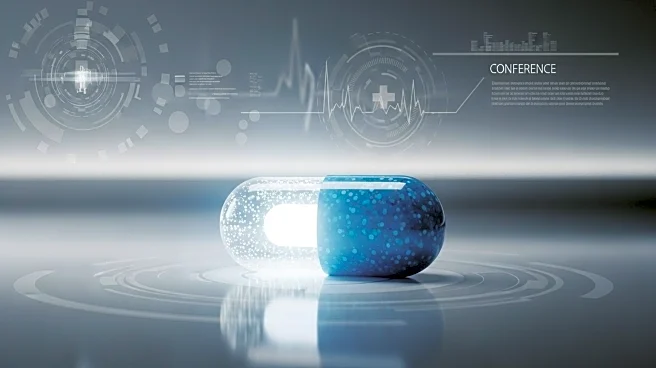What's Happening?
Recent research has highlighted the importance of SLAM family markers in identifying haematopoietic stem cells (HSCs). These cells are crucial for their self-renewal ability and multipotent differentiation potential, making them vital for regenerative medicine applications such as bone marrow transplants and gene therapy. The study utilized Affymetrix oligonucleotide arrays to compare gene expression profiles between HSC-enriched populations and haematopoietic multipotent progenitor cells. The findings revealed that Slamf1, encoding CD150, is significantly increased in HSC-enriched populations, providing a reliable marker for isolating these cells for research and clinical use.
Why It's Important?
The identification of reliable markers for HSCs is critical for advancing regenerative medicine and improving clinical outcomes in treatments involving stem cells. By establishing a clear panel of markers, researchers can more effectively isolate and utilize HSCs, enhancing the precision and efficacy of therapies such as bone marrow transplants. This research contributes to the broader understanding of stem cell biology and supports the development of innovative treatments for various diseases, potentially benefiting patients with conditions requiring stem cell interventions.
What's Next?
The study's findings may lead to further research into the applications of SLAM markers in stem cell therapy and regenerative medicine. Researchers could explore additional markers that enhance the identification and isolation of HSCs, potentially improving the success rates of clinical treatments. The integration of these markers into standard practices could revolutionize stem cell research and therapy, offering new hope for patients with hematological and genetic disorders.
Beyond the Headlines
The use of SLAM markers in stem cell identification underscores the importance of molecular biology in advancing medical research. It highlights the potential for genetic profiling to transform healthcare by enabling more targeted and effective treatments. This development also raises ethical considerations regarding the manipulation and use of stem cells, prompting discussions on the responsible application of such technologies in medicine.










